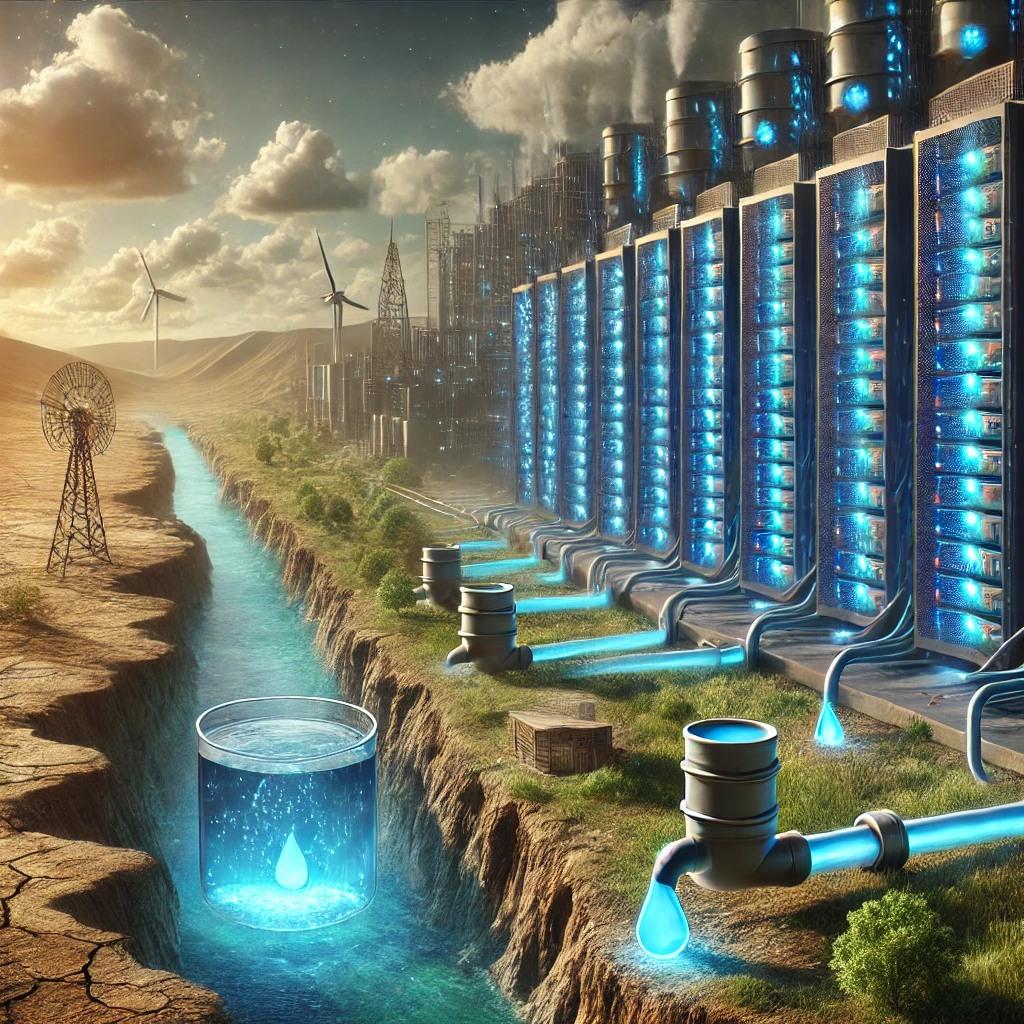The Hidden Water Footprint of Artificial Intelligence: A Growing Environmental Concern
The Hidden Water Footprint of Artificial Intelligence: A Growing Environmental Concern
In the race to develop increasingly powerful artificial intelligence systems, a critical environmental cost has emerged that rarely makes headlines: water consumption. As data centers proliferate across the globe to support AI’s explosive growth, their massive water requirements are raising serious concerns about sustainability and resource management.

The Thirsty Nature of AI Infrastructure
At the heart of every AI system lies a network of data centers, each requiring enormous amounts of water for cooling their high-performance computing systems. A single large-scale AI training run can consume thousands of gallons of water, primarily used to prevent the sophisticated hardware from overheating during intensive computational processes.
Modern data centers employ various cooling methods, from traditional water-based cooling systems to more advanced evaporative cooling techniques. While these systems are essential for maintaining optimal operating temperatures, they contribute significantly to water consumption in regions that may already face water scarcity challenges.
Understanding the Scale
To put this in perspective:
- Training a single large language model can require up to 500,000 gallons of water
- The average data center uses as much water as a small town
- Global data center water consumption is projected to double by 2030
The Geographic Dimension
The water impact of AI varies significantly based on location. Data centers in arid regions like Arizona or Nevada place additional strain on already stressed water resources. Meanwhile, facilities in cooler climates like Norway or Sweden can utilize natural cooling methods, substantially reducing their water footprint.
Innovation in Sustainable Solutions
The tech industry isn’t standing still in the face of these challenges. Several promising approaches are emerging:
- Closed-loop Cooling Systems: Recycling water within the data center to minimize consumption
- Air-side Economization: Using cool outside air when possible instead of water-based cooling
- Liquid Immersion Cooling: Submerging servers in non-conductive fluids that are more efficient than water
- Smart Resource Management: Using AI itself to optimize cooling systems and reduce water usage
The Path Forward
As AI continues to evolve, the industry must balance technological advancement with environmental responsibility. This requires:
- Transparent reporting of water usage by AI companies
- Investment in water-efficient cooling technologies
- Strategic placement of new data centers in water-rich regions
- Development of industry-wide standards for sustainable AI infrastructure
Conclusion
The water consumption of AI infrastructure represents a growing environmental challenge that demands immediate attention. As we continue to push the boundaries of artificial intelligence, ensuring sustainable water usage must become a priority equal to computational performance. The future of AI must be not just intelligent, but environmentally conscious as well.
The tech industry, policymakers, and environmental experts need to collaborate on developing and implementing solutions that allow for continued AI innovation while protecting our planet’s most precious resource. Only through such coordinated efforts can we ensure that the AI revolution doesn’t come at the cost of global water security.
